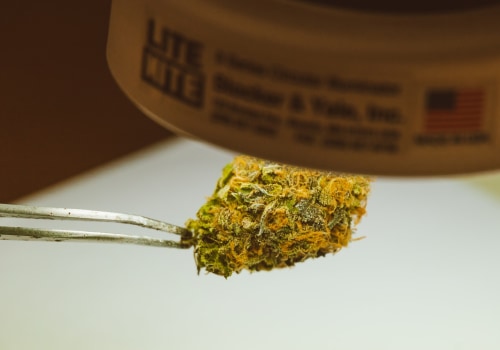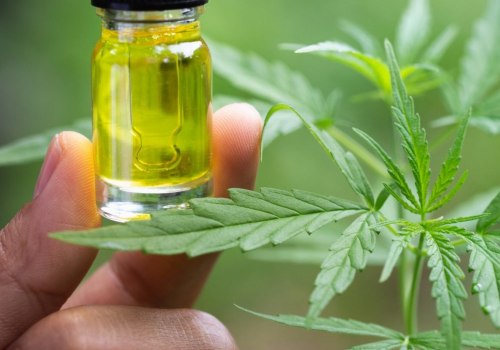Medical marijuana is a controversial topic, with some people claiming that it has numerous potential medical uses and benefits, while others claim that it is nothing more than a dangerous drug. However, the scientific evidence does seem to suggest that medical marijuana could potentially be used to treat a wide variety of medical conditions. It is important to remember that marijuana is still classified as a Schedule I drug by the U.S. Drug Enforcement Administration, which means that it has a high potential for abuse and is not currently accepted for medical use in treatment in the United States. However, this may change in the future as more research is conducted on the potential medical benefits of marijuana.
What Is Medical Marijuana And How Does It Work?
Medical marijuana is a type of medication that is derived from the cannabis plant. It is used to treat a variety of conditions, including pain, nausea, and appetite loss. Medical marijuana can be taken in a variety of forms, including capsules, tablets, tinctures, oils, and edibles. It can also be inhaled through vaporization or smoking.
The active ingredients in medical marijuana are Cannabidiol (CBD) and Tetrahydrocannabinol (THC). CBD is thought to have medicinal properties, but it does not produce the "high" that THC does. THC is the component of cannabis that is responsible for the psychoactive effects of the plant.
Medical marijuana works by interacting with the body's endocannabinoid system. This system is responsible for regulating a variety of functions, including pain, appetite, mood, and memory. The endocannabinoid system has receptors that are located throughout the body, including in the brain. When medical marijuana is consumed, it binds to these receptors and alters their function. This can lead to a variety of different effects, depending on which function is being affected.
Potential Uses Of Medical Marijuana
Medical marijuana is often touted as a panacea for a variety of ills, and there is some evidence to support many of these claims. Below are some potential uses for medical marijuana:
Chronic pain
Marijuana has been shown to be effective in treating chronic pain, including nerve pain and muscle pain.
PTSD
Medical marijuana can help alleviate the symptoms of post-traumatic stress disorder (PTSD), including anxiety and nightmares.
Nausea and vomiting
Medical marijuana can be helpful in treating nausea and vomiting associated with chemotherapy and other cancer treatments.
Appetite stimulation
Medical marijuana can increase appetite in people who are dealing with cancer or other illnesses that cause a loss of appetite.
Seizure control
Marijuana has been shown to be effective in reducing the frequency and severity of seizures in people with epilepsy.
Glaucoma
Marijuana can help reduce the pressure in the eye, which can relieve the symptoms of glaucoma.
Cancer
There is some evidence to suggest that marijuana can help kill cancer cells or slow their growth.
Alzheimer's disease
Marijuana may help reduce the symptoms of Alzheimer's disease, including memory loss and cognitive decline.
Multiple sclerosis
Marijuana has been shown to be effective in reducing the symptoms of multiple sclerosis, including pain, muscle spasms, and seizures.
Crohn's disease
Marijuana can help alleviate the symptoms of Crohn's disease, including abdominal pain and diarrhea.
HIV/AIDS
Medical marijuana can help alleviate the symptoms of HIV/AIDS, including nausea, vomiting, and loss of appetite.
Depression
Some studies have shown that marijuana can help improve mood and relieve symptoms of depression.
Arthritis
Marijuana has been shown to be effective in reducing the pain and inflammation associated with arthritis.
Asthma
Marijuana can help reduce the symptoms of asthma, including bronchodilation and airway inflammation.
ADHD
Some studies have shown that marijuana can help improve symptoms of attention deficit hyperactivity disorder (ADHD).
ADD
Some studies have shown that marijuana can help improve symptoms of attention deficit disorder (ADD).
Epilepsy
Marijuana has been shown to be effective in reducing the frequency and severity of seizures in people with epilepsy.
Autism
Some studies have shown that medical marijuana can help improve symptoms of autism, including social withdrawal and communication difficulties.
There is still much research to be done on the potential uses of medical marijuana, but the evidence so far suggests that it may be effective in treating a variety of conditions.
Best Way To Consume Medical Marijuana
There is no one-size-fits-all answer to this question, as the best way to consume medical marijuana will vary depending on the individual and their condition. Some people may find that smoking or vaporizing medical marijuana is the most effective way to relieve their symptoms, while others may prefer using an edible or topical product. Talk to your doctor or a qualified medical marijuana dispensary staff member to find out what method of consumption is best for you. If smoking is your option, here are some tips.
- Use a clean pipe, bong, or joint.
- Grind the cannabis finely before smoking.
- Take small puffs and hold them in for a few seconds before exhaling.
- Start with a low dose and wait at least an hour before taking more.
- Opt for raw pre-rolled cones for a healthy smoking experience.
Medical marijuana is a safe and effective way to treat a variety of conditions. Be sure to follow your doctor's instructions and start with a low dose to minimize the risk of adverse effects. If you're looking to begin smoking in a healthier and organic way, consider buying raw cones in bulk. They're made with all-natural materials and come in a variety of sizes. You'll save money and have a never-ending supply.
Does Using Black Raw Cones For Marijuana Have Effect On Your Health?
There is no definitive answer to this question as the effects of smoking marijuana - regardless of the type of paper used - can vary depending on a number of factors, including the individual's overall health, how much they smoke, and the potency of the weed itself. However, some experts believe that using raw cones made from black paper may actually be healthier for smokers than white paper as they contain fewer harmful chemicals. So if you're looking to reduce your risk of negative health effects from smoking marijuana, switching to black raw cones may be a good idea.
What Are The Side Effects Of Medical Marijuana?
Like any medication, medical marijuana can cause side effects. The most common side effects include:
- Dry mouth
- Drowsiness
- Nausea and vomiting
- Anxiety or paranoia
- Euphoria or feelings of relaxation
- Decreased blood pressure
- Increased heart rate
- Impaired coordination and balance
- Dizziness
These side effects are usually mild and go away on their own. If you experience more severe side effects, such as hallucinations or delusions, contact your doctor immediately. Be sure to start with a low dose of medical marijuana to minimize the risk of adverse effects.
Is Medical Marijuana Legal?
There is a lot of confusion and misinformation out there about the legal status of medical marijuana. In reality, the answer to this question depends on a number of factors, including local laws and regulations.
In the United States, the federal government classifies marijuana as a Schedule I substance, which means that it has a high potential for abuse and no accepted medical use. However, individual states have the authority to pass their own laws regarding marijuana, and many states have chosen to do so. As of 2019, 33 states plus Washington D.C. have legalized medical marijuana in some form.
This patchwork of laws can make it difficult to determine whether or not medical marijuana is legal in a particular area. If you are considering using medical marijuana, it is important to research the laws in your state and consult with a qualified healthcare professional.
How Do I Get A Medical Marijuana Card?
There are a few ways that you can go about getting a medical marijuana card. The first way is to go through your state's medical marijuana program. In order to do this, you will need to have a qualifying condition that allows you to participate in the program. Once you have been approved, you will be able to get your card from the state.
Another way that you can get a medical marijuana card is by going through a private doctor. This option is often more expensive than going through the state program, but it may be worth it if you do not qualify for the state program or if you want more privacy. When you see a private doctor, they will evaluate your case and determine if medical marijuana is right for you. If they determine that it is, they will write you a recommendation for a medical marijuana card.
Contact A Certified Raw Pre Rolled Cones Distributor Today
You want to make sure that you find a company that has a good reputation and that is able to provide you with quality products. If you are looking for a way to get your hands on some of the best pre-rolled cones, then contact Green Blazer to help you improve the quality of your weed. Green Blazer is one of the most popular and trusted sources for pre-rolled cones. They offer a wide variety of options so that you are able to find the perfect cone for your needs. No matter what your preference is, Green Blazer has the perfect cone for you. Contact Green Blazer to get the best possible deal on pre-rolled cones.










